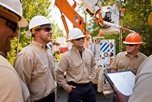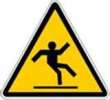
By Stuart Perry
Think about the overall wear life of the garment and what the cost will mean long term.

By Margaret Moran
Today, first responders are demanding that if data are available, municipalities must disseminate that information for the health and safety of employees and the public.
By John Olesky
Many eye injuries occur because there was not adequate side protection, proper fit, or because particles fell from above, such as when drilling overhead.
By Ian Hutcheson
To ensure maximum protection for hazmat and emergency personnel, organizations should specify suits that meet both EN 943 and NFPA 1991.
By Karen D. Hamel
The PSM standard requires employers to work with employees when establishing and reviewing plans.

By Keith Bilger
You owe it to your employees to take another look at the signs you currently have in place. Are they clear? Are they necessary? Are they accurate?
By Joe Buckley
On the tenth day, I researched the industry to discover several other instrument accessories, such as an extended run-time battery for those who work longer shifts.
By Robin Knowles
Outsource your training initiatives and boost your bottom line.

By John Rudy
There are six critical components to a workplace fire safety program.
By Shawn M. Galloway
How fast you go about evolving desirable safety culture behaviors is the difference in control and influence.
By Robert Pater
The quest for an absolute fail-safe -– when none exists -– can make leaders more vulnerable to being sold a bill of goods, with wild promises followed by crashing disappointments.
By Jerry Laws
One analyst said the refinery "needs relatively little maintenance" because much of its equipment is new, having been installed after the March 2005 explosion.